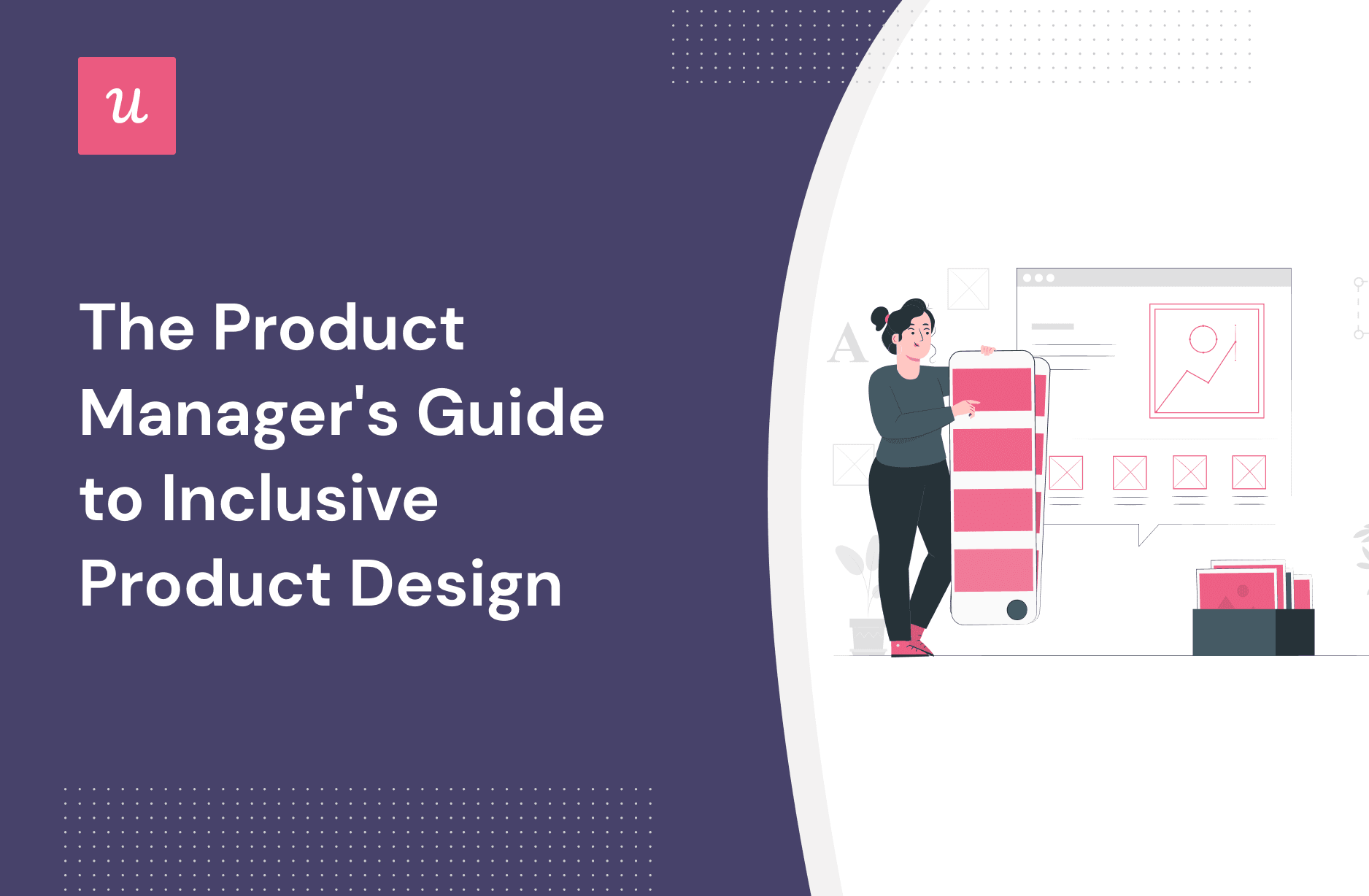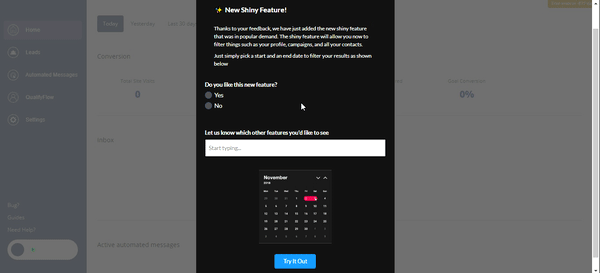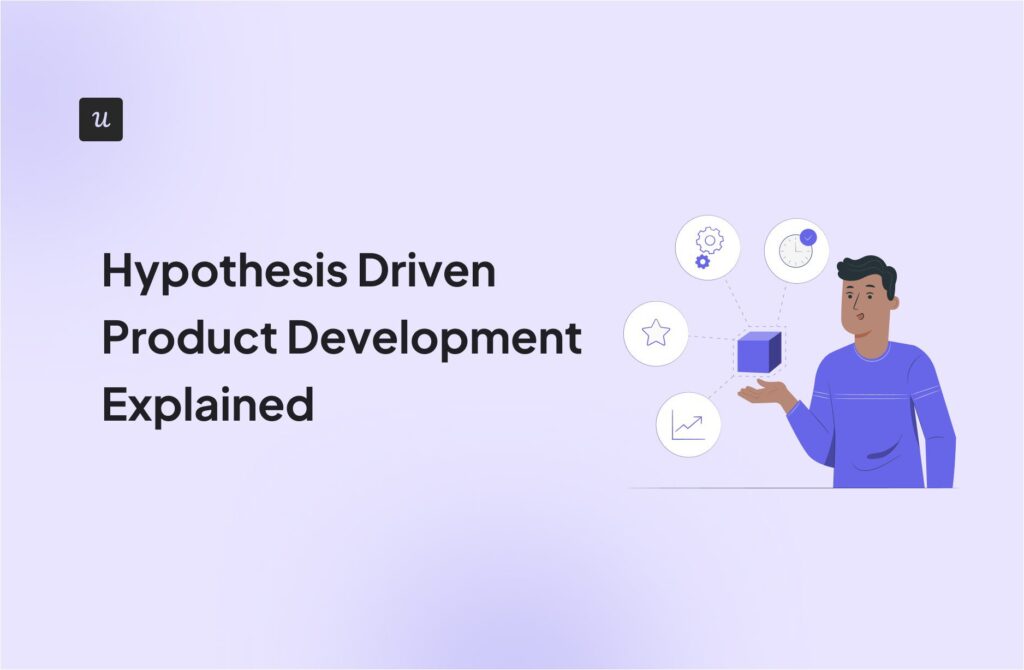
What is inclusive product design? Why is it important for product managers? How can you incorporate it into the product development process?
These are just a few questions that we tackle in the article. We also look at a few excellent examples of inclusive product design in SaaS.
Are you ready to dive in? Let’s get right to it!
Try Userpilot Now
See Why 1,000+ Teams Choose Userpilot

What is inclusive design?
Inclusive product design is a set of principles aimed at developing products that users of different backgrounds and abilities can use to achieve their goals.
In other words, it is about addressing user needs to enable them to fully realize the benefits of the product. These needs, however, don’t depend on their JTBDs but rather unique characteristics like age, culture, gender, geo-location, language, or disabilities.
You can achieve this by providing users with inclusive technology, like keyboards or mice, while in SaaS, this usually means making the UI more accessible and intuitive.
Accessibility design vs universal design vs inclusive design
Inclusive design is easy to confuse with accessibility design and universal design.
Accessibility is one of the outcomes of inclusive design and it focuses on disabilities or learning difficulties. Such people need specific adaptations to be able to access digital products, and accessibility enables it. Accessibility is fairly easy to assess thanks to laws or guidelines.
Inclusive design has a wider scope than accessible design. It looks at addressing all the different ways in which people can be excluded from using digital products. This is not limited to defined disabilities or historically marginalized groups.
Both inclusive and accessibility design focus on developing products that can be customized to different needs.
In contrast, universal product design aims to develop one version of the product that could be used by the largest and most diverse user base possible.
Why product managers should care about inclusive design
When creating products we tend to assume that if it works for us, it will work for other users. Except, that it won’t. That’s because product professionals are rarely a representative sample of the target user population and often have very different abilities.
Inclusive product design helps teams empathize with their users and remove bias from the product design process.
Why does it matter?
There are a number of advantages. To start with, inclusive products have a better chance of attracting customers from different market sectors. In fact, it can be one of the key differentiators in a saturated market where it’s difficult to compete on features or price.
Inclusive product design also eliminates friction from user interactions with the product. This leads to reduced user churn and increased adoption rates. In the long run, this translates into greater product success.
Finally, including all your users, especially those from traditionally excluded groups, can increase their loyalty, and improve user retention and your brand’s reputation.
Inclusive product design process for the tech industry
Inclusive product design is a process that should be integrated into every stage of the product development process.
To create inclusive products, you need to conduct user research and collect feedback from different perspectives. It also requires continuous product discovery, user testing, and building diverse teams to name just a few.
Actions that lead to an inclusive product development process
So how exactly do you go about designing inclusive products? Let’s look at the key steps you need to take.
Don’t make accessibility an afterthought
Many teams make the mistake of neglecting inclusivity and accessibility until the product is ready and only then tweak it for different users.
This may be enough to tick the accessibility boxes but won’t make your product truly inclusive for all users. What’s more, at this point, the adaptations may be more costly or complex to incorporate.
It’s much easier and cheaper to design products with inclusivity in mind from the very beginning.
It doesn’t need to be a separate process. Instead, it’s another angle for approaching your customer research. In addition to satisfying users’ functionality needs, you also look for ways to address their accessibility requirements.
Make continuous discovery part of your process
User needs keep constantly evolving so the product discovery process is not a one-off exercise.
As you are continuously searching for new user pain points, needs, and ways to address them, keep your eyes open also for opportunities to improve the accessibility and inclusivity of your product.

An inclusive design process means fewer assumptions, more testing
As mentioned, we bring a set of assumptions about our users and how the product satisfies their needs into the product. Some of them may be accurate while others will be completely off. The only way to check that is by testing the product with real users.
Beta testing
Beta testing is a good way to test your product design at the building stage.
How do you go about it?
Basically, you release the product to a number of users and track their behavior to identify accessibility issues. For example, your users failing to complete an action may be an indication of friction.
You can then modify the design and further test it to see if it improves the conversion rates.
The key to successful beta testing is finding the right testers. The group needs to be diverse enough and present your target audience.

Usability testing interviews
Once you launch your product, user interviews can help you test product usability to further refine its inclusive design.
Just like with beta testing, you need to include diverse users in your interviews. To ensure you have enough people, you may need to think of some incentives like a voucher or a discount code.

There are different techniques for usability testing, like the five-second test. In the test, you show your product to the user for five seconds and then interview them about their impressions.
Apart from interviews, you can also use first-click testing, eye-tracking, or session replays.
Continuous user feedback collection
As your users are engaging with the product, use in-app surveys to collect feedback about their user experience.
These are easy to design and trigger to target specific user segments.
Improving the inclusivity and accessibility of your product normally requires qualitative feedback, so make sure you include open-ended questions in your surveys.

Consider cultural barriers and use localization
Cultural differences are one of the main barriers to inclusive design for SaaS teams. To address them, comprehensive product localization is necessary.
Localizing your product
Product localization focuses on creating an inclusive product experience for users speaking a different language and living in different cultural circles. The objective is to make the product feel as if it was originally designed for them.
This is not limited to the translation of the UI copy or content. It may involve changes to the UI to accommodate different scripts and cultural changes.

Localizing product experiences
Product localization is not only about the product itself. It needs to cover all the touchpoints along the user journey where they interact with the product.
These include:
- Display ads, social media posts, and search keywords.
- Landing and product pages.
- Sign-up process, onboarding steps.
- Main UI, modals, and account management.
- Onboarding emails, use case emails, missed steps emails, newsletters.
- Help section or customer support.
- Upsell and demo emails.
- Webinars, tutorials, demos, walkthroughs.
- Pricing page, checkout page, confirmation emails.
- Engagement emails, win-back emails, feedback emails.
- Renewal emails, notification emails.

Translating each of these manually is a tedious and labor-intensive process. Fortunately, there are UI-powered localization tools available that enable you to automate it.
For example, Userpilot allows you to localize your in-app messages and the resource center modules. You can also translate mobile slideout content into 32 different user-preferred languages with Userpilot’s automated localization options.

Build a diverse team
To increase your chances of building an inclusive and accessible product, you need to involve people with diverse perspectives.
Diverse product teams
To start with, build your product team around people from different cultures and different backgrounds.
They will bring unique perspectives and help you identify issues and opportunities to build a delightful product.

Foster collaboration
To design robust product experiences, you can’t rely solely on the expertise of the product team members.
So apart from that, make sure your product team works closely with other teams.
UI and UX designers, customer-facing or marketing colleagues can all offer unique perspectives and insights into user problems and how to make your product more inclusive or accessible.
Inclusive product design examples in the tech industry
Now that we know some of the principles of inclusive product design, why don’t we look at a few examples that illustrate some of them?
Twitter is a great example of inclusive digital design for a number of reasons.
To start with, it allows users to filter the content they see.
It recognizes the fact that not all users speak English and it enables them to follow tweets and trends in their own language. This not only improves inclusivity. It also makes it easier for users to find content originally created in specific languages.

What’s more, Twitter offers users a broad range of accessibility settings. These include the customizable VoiceOver functionality which reads out the tweets.
You can also increase color contrast to make the text more accessible and disable the in-app animations which could be distracting for users with attention deficiency disorders.

Duolingo
Duolingo is one of the most popular language-learning apps in the world. It offers language courses in over 40 languages and has learners from around the world.
Duolingo’s course content reflects the wide diversity of its users. The characters in the lessons show pretty much every imaginable characteristic and come from different ethnic and cultural backgrounds.

Asana
Asana is a well-known project management software that takes inclusivity and accessibility very seriously.
Last year, the Asana team decided to adjust its color schemes to make the product more accessible. It’s a simple yet effective adaptation that users with impaired vision surely appreciate.

Conclusion
Inclusive product design is essential for product success.
That is why product teams should include it in the product development process from the very beginning and be on the constant lookout for opportunities to improve their product inclusivity and accessibility.
If you would like to see how Userpilot can help you make your product more inclusive, book a demo today!






